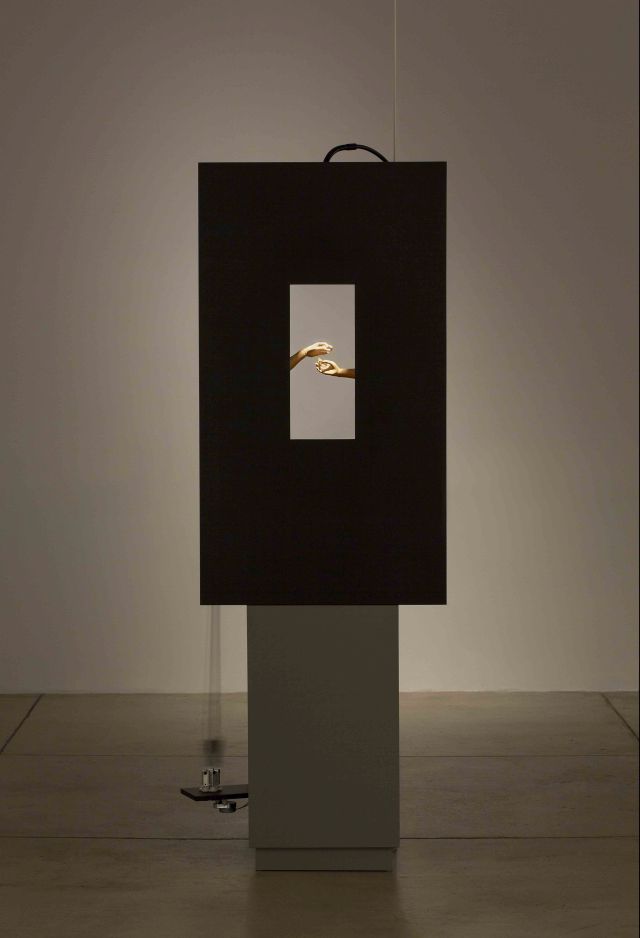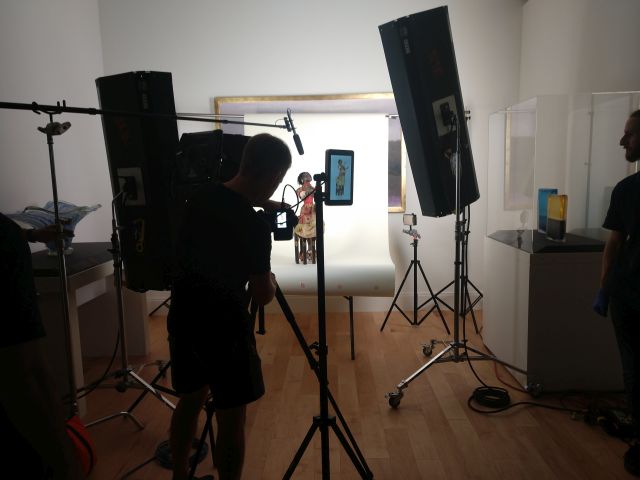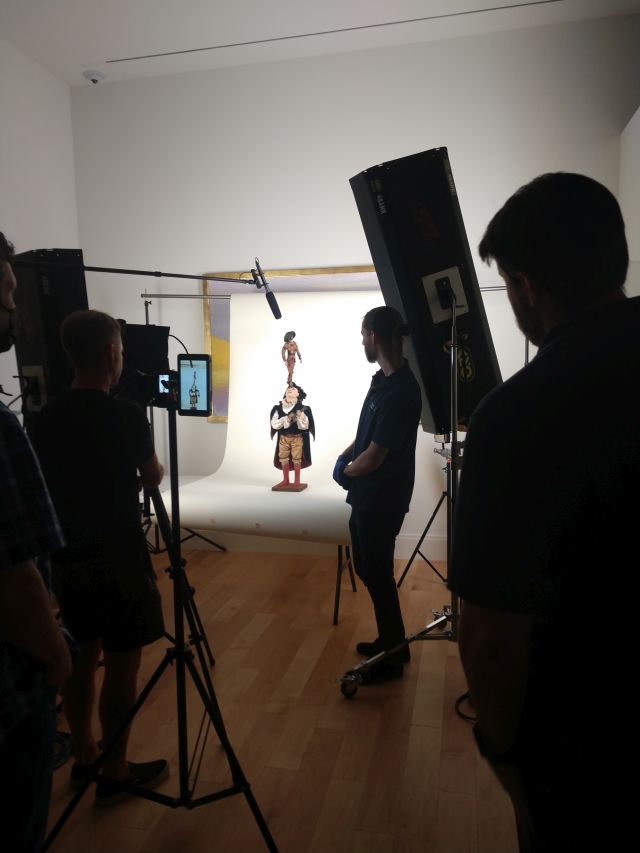As with last week’s post on my dissertation work, a lot has happened with the Motion/Emotion exhibition since my last check-in, so let’s get caught up. More specifically, I’ll be sharing three exciting developments that have happened since June 1st.
Two of those events took place last week. On Monday, we filmed the Barry Art Museum’s automatons in action. Aside from documenting them for our own records, we’d like to have a video playing in the gallery so that visitors can see the automatons motion, since they are kinetic works by design. Since I’d mostly experienced the automatons through photographs or behind vitrines in-person, I drove to Norfolk to watch them being filmed up close. What made this day exceptional for me was that this was the first time I’d seen any automatons move in person. Before last week, I’d only seen them moving on video. Even the movement of the automatons at Shelburne Museum I only knew through recordings; the actual works were more or less sculptures under vitrines.
The experience was both eerie and entrancing. Watching these antique machines transition from static sculptures to moving forms was startling. I personally found the automatons with papier-mache heads as opposed to porcelain doll ones particularly unnerving because they could blink their eyes and open their mouths, bringing them one step closer to emulating human movement. Yet I couldn’t look away. Even as a 21st-century viewer accustomed to smartphones and other technologies, I found them mesmerizing.
Watching the automatons move in person also emphasized their sensuousness. Hearing the gears at work and listening to the clothing crinkle and bend added an audible dimension beyond the musical accompaniment I hadn’t appreciated before. Winding the figures and feeling the resistance of the gears as you gradually built up tension also emphasized their physicality. Their movement, intentionally slow and deliberate in many instances, gave their actions a distinctly dream-like quality. This was a rare opportunity and I’m so fortunate the Barry let me experience it. Being able to watch these figures come to life before my eyes, so to speak, has greatly deepened my understanding and appreciation for them as forms.

Cabinet dimensions 74 x 25 x 16 inches.
The other exciting development from last week was an incredible studio visit with Elizabeth King, whose work will appear in the show. A group of us went to see her work, including the museum’s director, collections manager, and a couple of advisory board members. The space itself is stunning, being a renovated hundred-year old building with two studios and living space in the loft on the second floor. King’s oeuvre is exquisite, spanning sculpture, photography, and stop-motion animation. The works are also well-maintained and ready for display with accompanying pedestals and related furniture in some instances. In terms of studio visits this was a dream, and we’re feeling very confident about how the show is coming together. Beyond the opportunity to see King’s work in person and talk with her more deeply about her practice, it’s also been about three years since my last studio visit, so the trip was a very special occasion for me.
The final event I’ll share is a great Advisory Board meeting that took place on June 1. After reviewing the exhibition’s concept, the various faculty on the Board provided several leads for exciting projects happening at Old Dominion University to share in the gallery space, including hospital companion robots taking design inspiration from children’s drawings, and robots focused on cultivating social skills in autistic children. All of this productive activity has shifted the show’s focus in two ways. First, we’ll be concentrating more deeply on the medical and therapeutic dimensions of robots in relation to emotion and embodiment, from prosthetics to companions in hospital-type settings. Second, we’ll be putting more emphasis on ODU projects in our contemporary considerations, using the gallery space to highlight student and faculty research. Not that we’re neglecting the art angle. If anything, we feel the medical dimensions of robots, emotion, and embodiment also pertain to the artists we’ve already contacted.

This meeting was especially exciting because we feel like we’ve had a breakthrough in both identifying tangible contemporary works for the gallery and providing focus to the overarching themes of the show. We already knew there’d be no shortage of material for educational programming, but we wanted to use the gallery space itself to highlight contemporary works while connecting them back to the Barry Art Museum’s automatons. Thanks to this conversation, we have a much better sense of how to accomplish this, and feel much more confident about effectively filling the space moving forward.
In short, there’s been a lot of productive activity going on, and we’re really starting to get a sense of the exhibition’s narrative and thematic arcs.

